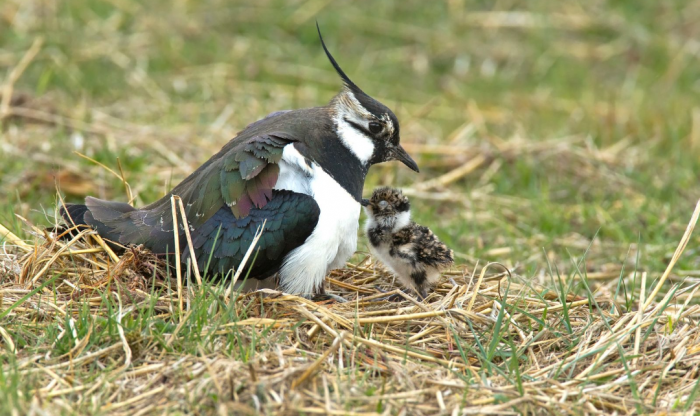Our brave ground-nesting birds
14th April 2021

A #SpeciesSpotlight by our Conservation Engagement Officer, Lucy Ford
Spring has sprung and our ground-nesting birds are busy preparing for the arrival of broods of fluffy chicks. These birds can be found in a variety of habitats across the Cairngorms National Park. It’s a risky strategy nesting on the ground, nests are often simple scrapes* offering little protection from the elements, are easily overlooked and trampled on, and accessible to predators.
Ptarmigan and Dotterel are arguably the toughest of our ground-nesting family. Surviving on the highest of our mountain tops their nests are often wedged in amongst the granite boulders to offer some shelter from the battering winds and icy precipitation. Ptarmigan can often be missed as their summer plumage blends into their rocky surroundings but the charismatic dotterel is easily spotted with the brightly coloured females are seen busily attending the male who incubates the eggs and rears the chicks.
Visitors to our extensive moorland areas will be familiar with the charismatic red grouse and golden plovers, nesting amongst the protective spiky heather red grouse hens will sit tight on their nests as a potential predator passes by, golden plover on the other hand like being in open areas offering wide vistas to look out for approaching danger, sounding piercing alarm calls when under a perceived threat.
Our Farmland in the Cairngorms offers some of the most important nesting ground for waders in the UK. Lapwings, oystercatchers, redshanks, and curlew make a noisy return in spring. Defending their nesting grounds with aggressive acrobatic swooping flights and screeching calls. These are arguably the most charismatic of the ground nesters. We welcome their return, with the marking of the end of winter and promise warmer months to come they are all too soon leaving us in late summer to return to their coastal feeding grounds.
Our woodlands offer a more protective sheltered environment with the most iconic ground-nesting giant being the capercaillie, who is also joined by woodcock and black grouse on our woodland edges. Being in woodland can give shelter to the worst of the elements but can conceal canny predators sneaking amongst the towering pines or within the thick understory.
Young fledglings of all birds are vulnerable at the best of times but life on the ground can be perilous and unforgiving for these species. The main dangers are trampling or nests, disturbance of adults leaving eggs or vulnerable young to the cold, or to predators. These events of cause can be caused naturally by a passing red deer or fox but continuous disturbance caused by people straying from main tracks, with or without dogs are an additional and more frequent disturbance event, heightening the risk to vulnerable helpless, flightless chicks. We can all help our ground-nesting birds by taking some simple steps when out enjoying the landscapes and habitats of the Cairngorms National Park this spring.
This Spring and Summer you can help protect these brave birds and their young by taking some simple steps when out enjoying the landscapes and habitats of the Cairngorms National Park
- Keep dogs on a short lead or close to heel in areas where there are ground-nesting birds (look for local signs).
- Follow all local signage and advice from Rangers.
- If spotted, avoid nests and young birds.
- If in doubt, always stay on the main paths or take extra care when going off-path in areas where ground-nesting birds are found.
* What are scrapes? They are shallow depressions with gently sloping edges, which seasonally hold water. They create obvious in-field wet features that are very attractive to wildlife. They support a wide variety of invertebrates and can provide important feeding areas for breeding wading birds and their chicks.